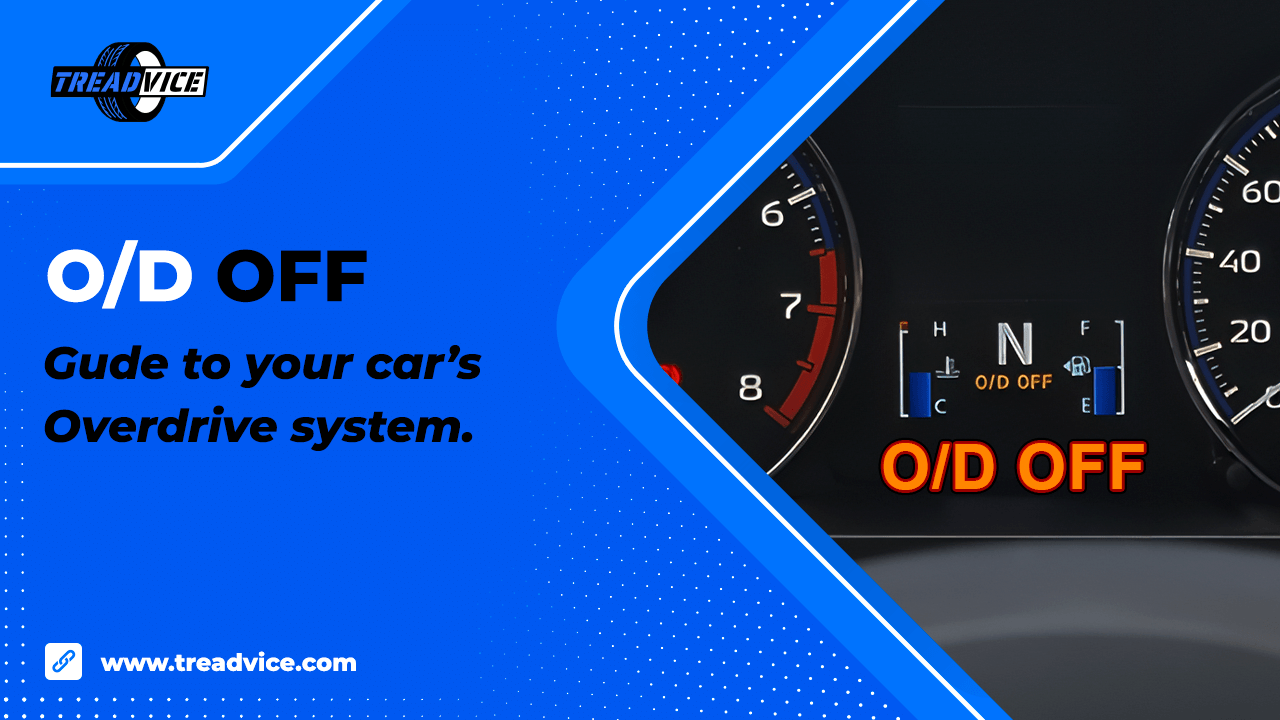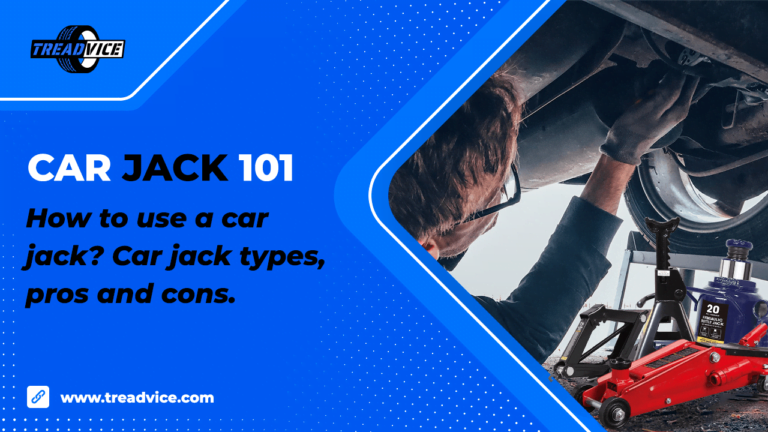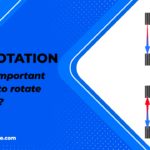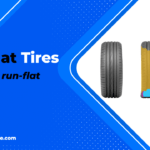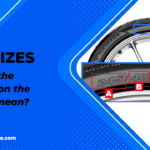What is the meaning of “O/D OFF” exactly? Well, it stands for Overdrive Off. It is a function that can significantly impact your driving experience.
Your car’s Overdrive (O/D) system is more than just a mysterious button or switch on your gear shifter. It’s a powerful tool that can significantly impact your driving experience, fuel efficiency, and even your vehicle’s longevity.
In this comprehensive guide, we’ll take you on a journey through the intricacies of the O/D system. You’ll learn what Overdrive is, how it works, and, most importantly, when and why you should use the O/D off feature.
Whether you’re a seasoned driver or new to the world of automotive technology, this article will equip you with the knowledge to make the most of this critical component of your car’s transmission system. So, fasten your seatbelt, and let’s dive into the world of Overdrive.
Table of Contents
What does overdrive ( O/D ) mean?
The Overdrive system in a car is a crucial part of the transmission that’s all about improving fuel efficiency and preserving your engine during highway driving. It’s like an extra gear designed to keep your engine running smoothly when you’re cruising at higher speeds.
How it works? Overdrive lets your engine turn at a slower speed compared to your car’s wheels, which saves on fuel and reduces the wear and tear on your engine. It’s particularly useful when you’re driving on the highway because it helps you maintain your speed without straining your engine.
But there are times when you might want to turn Overdrive off, and you can do that with an “O/D Off” button or light on your dashboard. This is handy when you’re hauling heavy loads, going up steep hills, or needing more engine power for specific situations. When you turn off Overdrive, your transmission shifts to a lower gear, giving you the extra torque you need.
So, Overdrive is your highway buddy, boosting fuel efficiency and engine life, but you can switch it off when you need extra power and control.
Why should you keep the O/D system turned ON?
- Fuel Efficiency: Overdrive is a higher gear in the transmission that enables the engine to turn at a lower RPM while the vehicle maintains a high speed. When the engine runs at a lower RPM, it consumes less fuel. This is especially advantageous during highway driving, where maintaining a consistent high speed is common. The engine works more efficiently in overdrive, leading to better fuel economy. It’s like choosing a higher gear on a bicycle when coasting on a flat road – it requires less effort, and you can travel a greater distance with the same amount of energy.
- Reduced Engine Wear: When you drive in overdrive at highway speeds, the engine is subjected to less stress. It doesn’t have to work as hard because it’s turning at a lower RPM.
Reduced engine stress means less wear and tear on engine components like pistons, crankshafts, and bearings. This, in turn, can lead to a longer engine lifespan and lower maintenance costs over the long term. Think of it as preserving your engine’s health by reducing its workload. - Noise and Vibration Reduction: Operating in overdrive also results in a quieter and smoother driving experience. Since the engine is running at a lower RPM, it generates less noise and vibration. This contributes to a more comfortable and less fatiguing ride, especially on long highway journeys.
The lower engine noise and vibration levels make conversations in the car easier, and they can reduce driver and passenger fatigue. - Improved High-Speed Performance: Overdrive gears are designed for high-speed cruising. They allow the vehicle to reach and maintain higher speeds more efficiently. This is particularly beneficial for highway driving and long-distance travel.
With overdrive engaged, your car can cover more ground with less effort, making it well-suited for highway conditions where maintaining high speeds is essential.
In summary, overdrive in a car’s transmission system significantly benefits fuel efficiency, engine durability, driver comfort, and high-speed performance. It’s a feature that optimizes the balance between power and efficiency, particularly during highway driving and contributes to a more enjoyable and cost-effective driving experience.
How to turn on the O/D system?
To turn on Overdrive (O/D) in a vehicle with an automatic transmission, you typically don’t need to press a specific button or take any action. Overdrive is typically set to “on” by default when you start your vehicle.
Why should you turn the O/D system OFF?
- Gives Your Vehicle More Power: Disabling O/D shifts your car into a lower gear, giving you extra power and torque. This is essential for tasks like climbing steep hills, passing other vehicles, and towing heavy loads, without straining your engine.
- Safer Overtaking: With O/D off, you have the power needed for faster and safer passing on the highway, reducing time spent in oncoming traffic lanes and enhancing safety.
Control Power on Hills: Disabling O/D while going uphill in hilly or mountainous areas provides better control and steady speed. It also enables engine braking during downhill descents, preventing brake overheating.
Improved Fuel Efficiency: In city or stop-and-go driving, O/D is usually unnecessary and can lead to frequent, unnecessary gear shifts, which can reduce fuel efficiency. Turning it off can help save on gas.
Preventing Engine Overheating: If your engine is running hot, turning off O/D eases the engine’s workload, aiding more effective cooling and preventing potential damage and costly repairs.
Enhanced Durability: Properly using O/D and turning it off when needed reduces wear and tear on your engine and transmission, extending their lifespan and lowering maintenance costs.
Optimal Performance: Knowing when to disable O/D ensures your car performs at its best in different driving conditions, whether it’s about fuel efficiency on the highway or extra power for specific tasks.
Remember that the specific situations for turning off O/D may vary depending on your car and driving conditions. Always refer to your car’s owner’s manual for manufacturer recommendations, ensuring informed decisions about O/D engagement.
How to turn off the Overdrive ( O/D ) System?
Here are the steps to turn off Overdrive (O/D) in your car.
Locate the O/D Control
Find the O/D control in your vehicle. It’s typically labeled as “O/D” or “Overdrive”.
The button can be located in a few common places:
- On the gear shifter: Many modern cars have the O/D control button or switch on the gear shifter itself, typically near the top of the shifter.
- On the dashboard: Some vehicles have the O/D control button or switch on the dashboard, usually near the driver’s seat, either to the left or right of the steering wheel.
- On the steering column: In a few older cars or trucks, the O/D control might be on the steering column.
- Check the Owner’s Manual: If you’re having trouble locating the O/D control, consult your car’s owner’s manual. It will provide specific information on the location and operation of the O/D control for your vehicle.
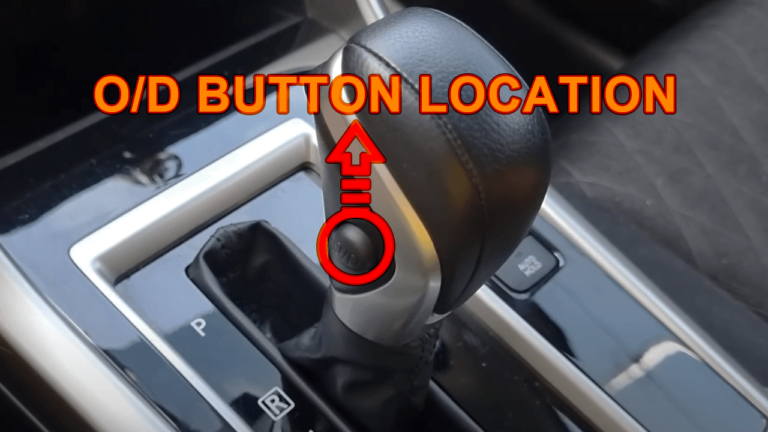
Illustration: Overdrive ( O/D ) OFF Button location – Mitsubishi Xpander
Park or Be in Neutral ( Optional )
If you are just testing out this feature for the first time, it’s generally a good practice to engage or disengage O/D when your car is in “Park” or “Neutral.”, then you could experience how your car behaves as you go. This way you can stay focused on driving.
Press or Toggle the O/D Button or Switch
Depending on your vehicle, you’ll either press a button or toggle a switch labeled “O/D” or “Overdrive.” When you do this, you’ll either turn off O/D or activate it, depending on its current status. On most cars, pressing the button turns off Overdrive.
Monitor the O/D Indicator Light
Pressing the O/D control, the O/D Indicator Light will typically change to indicate whether Overdrive is engaged or disengaged. If it’s turned off, the light may illuminate or display an “O/D OFF” message.
Drive as Needed
With O/D turned off, your car will use one gear lower, providing more power and torque. This is useful when you need extra power for tasks like passing other vehicles on the highway, climbing steep hills, or towing heavy loads.
Always remember that the location and operation of the O/D control can vary between different car makes and models, so consulting your owner’s manual is essential for precise instructions tailored to your vehicle.
In what situations should we turn the O/D OFF?
Here are the situations in which you should turn off Overdrive (O/D) in your car:
- While Climbing Steep Hills: When driving uphill, turning off O/D helps your car generate more power for a smoother ascent.
- Passing or Overtaking: Disengaging O/D provides extra power for quicker and safer highway passing.
- Towing Heavy Loads: When towing or carrying a heavy load, it’s best to turn off O/D to handle the increased weight.
- City or Stop-and-Go Driving: In city traffic with frequent stops and starts, O/D is usually unnecessary. Turn it off for better fuel efficiency.
- Hilly or Mountainous Terrain: On hilly or mountainous roads, disengage O/D when going uphill and during downhill descents to maintain control.
- Engine Overheating: If your engine is running too hot, turning off O/D eases the engine’s workload and helps with cooling.
Keep in mind that these are general tips, and it’s essential to consult your car’s manual for specific recommendations. Some modern vehicles manage these situations automatically, so the manual will provide the best guidance for your particular vehicle.
Frequently Asked Questions (FAQs)
“O/D Off” stands for “Overdrive Off,” and it’s a setting found in vehicles with automatic transmissions. Overdrive is an extra gear designed for optimal fuel efficiency during highway driving. When you see “O/D Off,” it means the Overdrive function is switched off.
As stated above, overdrive lets the engine run at a lower speed compared to the vehicle’s wheels, reducing fuel consumption and engine wear, particularly when cruising on level roads. In specific situations, like when towing heavy loads or navigating hilly terrain, you might want to disable Overdrive. This provides more engine power and control for those demanding conditions.
The “O/D Off” light is a dashboard indicator in vehicles with automatic transmissions. When this light is illuminated, it means that the Overdrive (O/D) function is turned off.
Overdrive is an additional gear in the transmission that’s typically used for more efficient highway driving. Turning off the Overdrive can be necessary in certain situations, like when towing heavy loads or driving on hilly terrain, to access more engine power and control. The “O/D Off” light serves as a visual reminder that Overdrive is currently disabled, and you’re operating without the extra gear primarily designed for highway efficiency.
The “O/D Off” light in your vehicle can come on for several reasons:
- You or someone else intentionally turned off Overdrive by pressing the O/D control button. This is done for situations like towing or steep terrain, requiring more power.
- Overheating, sensor problems, or transmission malfunctions can trigger the O/D light, indicating the need for a mechanic’s inspection.
- Faulty wiring, sensors, or control modules can also activate the O/D light due to incorrect signals.
- Modern vehicles have diagnostic systems that detect transmission or component issues, illuminating the O/D light to alert you.
- Some vehicles use the O/D light to remind you of transmission service or fluid changes based on mileage or time. Consult your owner’s manual and have your vehicle inspected by a mechanic if the light stays on to prevent costly repairs or further damage.
If your O/D light comes on and stays on, then you should consult your vehicle’s owner’s manual to understand the specific issue and, if necessary, have your vehicle inspected by a qualified mechanic. Ignoring transmission issues can lead to costly repairs or further damage.
Conclusion: Should we drive with O/D on or off?
In your day-to-day driving, you’ll want to keep Overdrive (O/D) on, especially when you’re cruising on highways or driving on flat roads. It’s like your fuel-saving mode, making your engine run smoothly and efficiently at higher speeds. However, if you’re towing a heavy load or navigating steep hills, it’s a good idea to turn Overdrive off. That gives you more engine power and control when you need it most. So, it depends on the situation, but for most of your regular driving, leaving O/D on is the way to go for better fuel economy and engine care.
